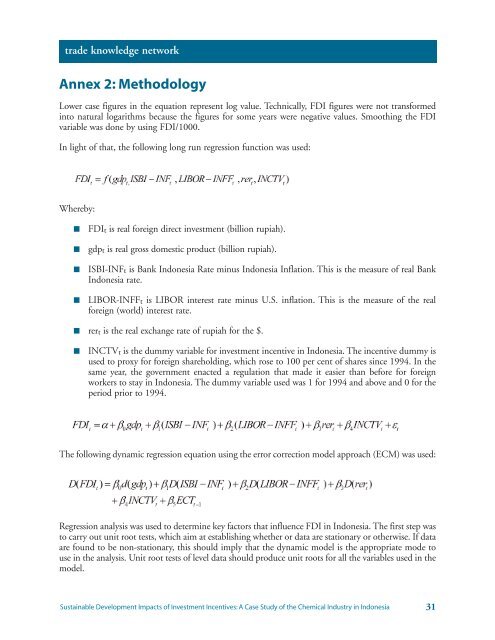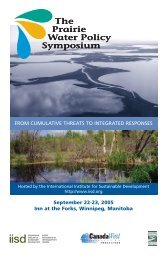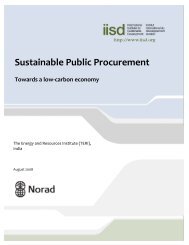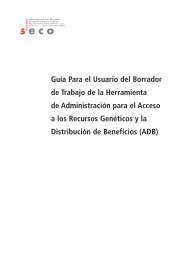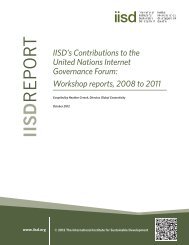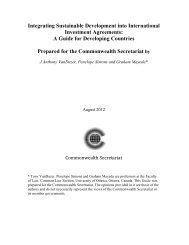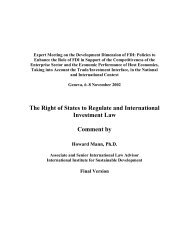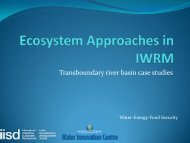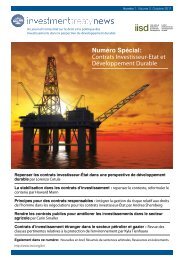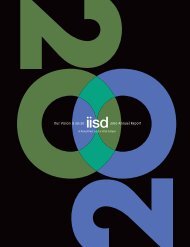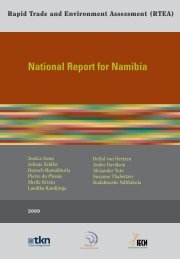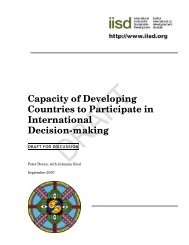Sustainable Development Impacts of Investment Incentives: A Case ...
Sustainable Development Impacts of Investment Incentives: A Case ...
Sustainable Development Impacts of Investment Incentives: A Case ...
Create successful ePaper yourself
Turn your PDF publications into a flip-book with our unique Google optimized e-Paper software.
trade knowledge network<br />
Annex 2: Methodology<br />
Lower case figures in the equation represent log value. Technically, FDI figures were not transformed<br />
into natural logarithms because the figures for some years were negative values. Smoothing the FDI<br />
variable was done by using FDI/1000.<br />
In light <strong>of</strong> that, the following long run regression function was used:<br />
Whereby:<br />
■<br />
■<br />
■<br />
■<br />
FDIt is real foreign direct investment (billion rupiah).<br />
gdpt is real gross domestic product (billion rupiah).<br />
ISBI-INFt is Bank Indonesia Rate minus Indonesia Inflation. This is the measure <strong>of</strong> real Bank<br />
Indonesia rate.<br />
LIBOR-INFFt is LIBOR interest rate minus U.S. inflation. This is the measure <strong>of</strong> the real<br />
foreign (world) interest rate.<br />
■ rert is the real exchange rate <strong>of</strong> rupiah for the $.<br />
■<br />
INCTVt is the dummy variable for investment incentive in Indonesia. The incentive dummy is<br />
used to proxy for foreign shareholding, which rose to 100 per cent <strong>of</strong> shares since 1994. In the<br />
same year, the government enacted a regulation that made it easier than before for foreign<br />
workers to stay in Indonesia. The dummy variable used was 1 for 1994 and above and 0 for the<br />
period prior to 1994.<br />
The following dynamic regression equation using the error correction model approach (ECM) was used:<br />
Regression analysis was used to determine key factors that influence FDI in Indonesia. The first step was<br />
to carry out unit root tests, which aim at establishing whether or data are stationary or otherwise. If data<br />
are found to be non-stationary, this should imply that the dynamic model is the appropriate mode to<br />
use in the analysis. Unit root tests <strong>of</strong> level data should produce unit roots for all the variables used in the<br />
model.<br />
<strong>Sustainable</strong> <strong>Development</strong> <strong>Impacts</strong> <strong>of</strong> <strong>Investment</strong> <strong>Incentives</strong>: A <strong>Case</strong> Study <strong>of</strong> the Chemical Industry in Indonesia<br />
31


